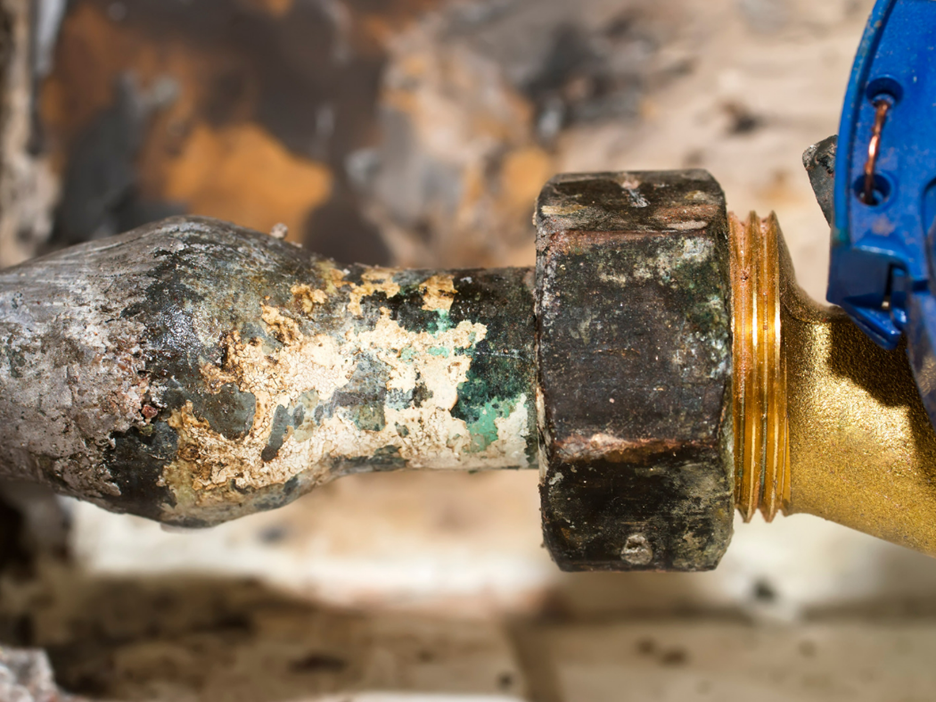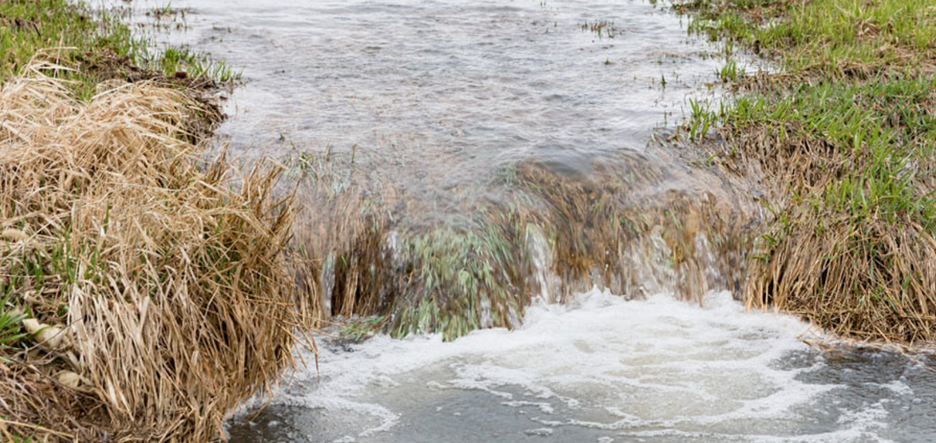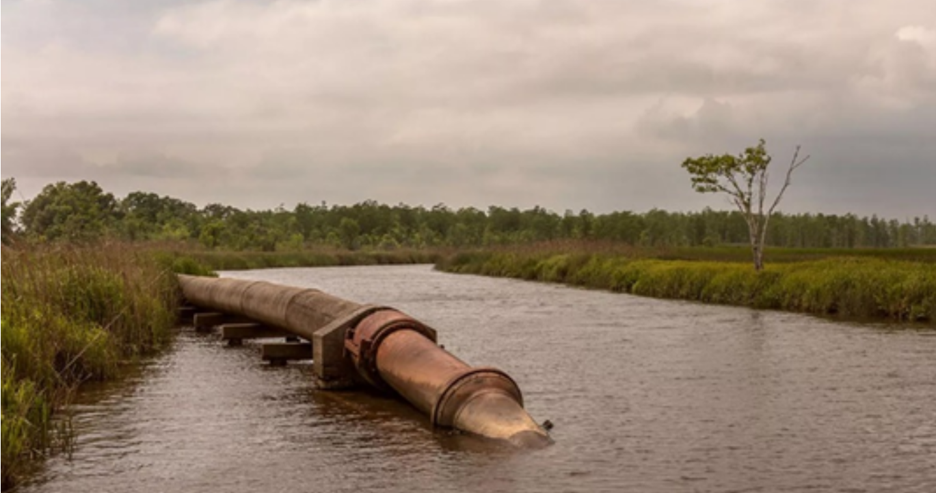In the United States, the expectation of clean and safe tap water is, unfortunately, not always the reality. A complex combination of factors is exposing millions across the country to drinking water contaminants – many with the potential to cause significant health problems. In this article, we spotlight three different regions that are grappling with different drinking water pollution problems.
In most parts of the United States, there is an expectation that clean, safe water comes out of the tap. Consumers trust that water is suitable for drinking, washing dishes, or showering – and that it’s safe for their children and pets. But in some areas, however, that expectation does not meet reality. A complex combination of factors – including chronic underinvestment, aging infrastructure, population growth, pressure from changing weather patterns, and socioeconomic issues – has resulted in conditions in which industrial discharge, agricultural runoff, and sewage overflows pollute clean water sources and threaten public health in locations across the country.
The potential impact of these contaminants can be devastating – ranging from acute symptoms to chronic, irreversible health problems. Without significant investment in our nation’s water infrastructure, Americans are likely to experience increasing threats from existing and emerging contaminants.
We’re shining a light on three regions grappling with different drinking water pollution problems to highlight the challenges being experienced across the country, and some of the potential solutions.
Lead contamination in Buffalo, New York
When you think about the issue of lead contamination, the city of Flint, Michigan often comes to mind. But while this is one of the most well-recognized recent examples in the United States, the reality is that many cities struggle with elevated lead levels in water. The problem is especially prevalent in older urban and industrial centers such as New York City, Chicago, Detroit, and Los Angeles, or areas in which houses were built before the ban on lead pipes in 1983.
One lesser-known example is Buffalo, New York, where a report by the National Resources Defense Council stated that more than half of the city’s 68,000 water service lines were projected to contain lead.

Old lead pipe in need of replacing
Lead is a neurotoxin, and while it’s harmful to everyone, children are particularly at risk. Early exposure to lead is shown to disrupt organ development, including brain, bone, and cardiovascular development, potentially leading to permanent cognitive deficiencies, behavioral issues, and chronic illnesses. The New York State Health Department says just under 6% of Buffalo children tested for elevated blood lead levels between 2000 and 2014 – that’s three times the rate in Flint.
Ten to twenty years later, it seems authorities are yet to make much progress in replacing potentially harmful water lines. Census data found that Buffalo had the oldest housing stock of any major city in America as of 2019, and news reports dated from last June state that only 1,700 of the more than 40,000 potentially problematic water service lines had been replaced so far. Water authorities estimated that replacing the remaining lines could take 20 years and cost up to $500 million.
With lead service lines being the main culprit behind lead contamination, total replacement of impacted lines is the best solution. However, this comes with its own challenges. Replacing outdated infrastructure is expensive and time-consuming and it’s not always easy to tell which lines are most impacted, especially if some lines are privately owned. The city has recently partnered with BlueConduit to use data analytics and machine learning to map its pipes and has been actively working to replace them. Still, as authorities have suggested, significant funding will be required.
Buffalo is not alone in this challenge. Today, more than nine million American households connect to water through lead pipes and service lines and children, toddlers, and teenagers in 400,000 schools and childcare facilities are at risk of exposure to lead in their water. Recent legislative action may help accelerate the transition.
In 2021, the Environmental Protection Agency (EPA) allocated $3 billion in Bipartisan Infrastructure Law funding for lead service line replacement. Furthermore, in November, the EPA announced a proposal to strengthen its Lead and Copper Rule, which would require water systems across the country to replace lead service lines within 10 years.
High nitrate levels in Southeast Minnesota
Minnesota is known as the ‘Land of 10,000 lakes’ but while its bodies of water may look pristine, experts have found widespread evidence of a potentially dangerous contaminant. In the state’s Karst region, authorities have found high levels of nitrates in the public water systems and underground drinking water sources, such as wells – potentially impacting up to 390,000 people.
Nitrate is not an emerging contaminant; it is a naturally occurring compound from processes such as plant decay and can be present at healthy levels in food such as carrots. When produced in nature, the levels are usually less than 3 mg/L, however, in Minnesota, authorities have found levels exceeding the maximum contaminant level of 10mg/L.
Consuming too much nitrate impacts oxygen levels in the body and can cause methemoglobinemia (also known as blue baby syndrome), which can lead to illness, cramps, vomiting, and even death. Those with compromised immune systems are most at risk.

Photo: Water flowing across a farm field after heavy rain
Nitrates are also harmful to the environment, resulting in algal blooms that can kill off fish and other marine life. In Minnesota, algal blooms have impacted more than 900,000 lakes and 93 coastline miles. These blooms also impact tourism, with an EPA study finding that algal blooms resulting from nutrient pollution cost the tourism industry $1 billion a year in losses.
High nitrate levels (above 10mg/L) are often the result of discharge from sewage systems, runoff from agriculture or fertilized soil, wastewater, landfills, animal feedlots, and septic systems. Therein lies the challenge of removing or preventing excess nitrates in water; it can be difficult to pinpoint the exact source of the problem. In Southeast Minnesota, the problem is exacerbated by the area’s porous geology; the region is uniquely vulnerable to groundwater contamination produced by agricultural runoff. This “non-point source pollution” is the leading cause of water quality problems.
Since the EPA does not have any regulations to enforce here, they rely on economic incentives to landowners such as subsidies to promote pollution mitigation efforts as well as a volunteer monitoring program. For Minnesota, the EPA has recommended additional measures such as modifications for the state’s Nutrient Management guidelines to change the land application of fertilizer as well as the NPDES permits for concentrated animal feeding operations such as pig farms.
As always, new regulations help drive change but they’re not a silver bullet. It’s worth considering how new technology could also help track and reduce nutrient and sediment runoff from agricultural lands. There is a long road ahead, however, as other funding and solutions are needed; voluntary monitoring programs will not be strong enough to change the tide.
PFAS in Brunswick County, North Carolina
Per- and polyfluorinated alkyl substances, better known as PFAS, have garnered global attention in recent years. Initially created in the 1940s for use in fire and water repellants, these “forever” chemicals have been used for decades in household products, non-stick cookware, firefighting foams, food packaging, and cosmetics.
Over time, the chemicals have slowly infiltrated natural environments and inside human bodies. They have even been found in infants, due to in utero exposure. Overexposure to this chemical has been linked to health problems such as kidney and testicular cancer as well as reproductive, liver, and thyroid issues, with more ailments being discovered yearly.

Discharging waste into the Cape Fear River Credit: Jeremy Lange
While PFAS is found across the country, Brunswick County in North Carolina has some of the highest rates of PFAS in water, including the presence of GenX, a man‐made chemical used in manufacturing nonstick coatings and for other purposes, in the Cape Fear River. Samples taken in 2019 showed PFAS concentrates of 185.9ppt, with the EPA recommended limit being 4 ppt. Unfortunately, the impact of this increased exposure may be evident in the region’s cancer rates, which at 276 cancer deaths per 100,000 are much higher than the national average of 149.4.
Since the initial discovery of GenX in 2016, Brunswick County has taken action to mitigate the contamination by partnering with CDM Smith to implement advanced reverse osmosis water treatment into its water treatment plant to reduce PFAS to near undetectable levels. The plant is expected to be finished in December 2024. Until then, point-of-use water systems can be used, although this may be cost-prohibitive for many households.
The EPA is in the process of setting up a National Primary Drinking Water regulation for six PFAS chemicals, but residents in many towns, cities, and states across the country already have been exposed to high PFAS levels for years.
More immediate investment is needed for utilities to mitigate the damage, especially in high PFAS areas, but with the EPA estimating it will cost $772 million a year for drinking water systems to comply with proposed new guidelines for “forever chemicals” in drinking water, the question remains, where will that money come from, and who is footing the bill?
The multifaceted nature of water pollution demands a comprehensive and collaborative approach that involves governmental bodies, communities, and private entities. Addressing these issues requires innovative technological solutions, sustained financial investment, stringent regulations, and a collective commitment to safeguard the fundamental right to clean water for all citizens.
